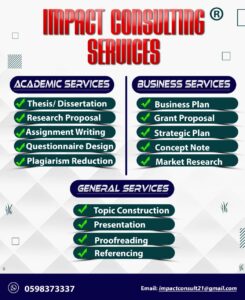Mastering the Writing of Master’s Thesis Introduction

Introduction
Mastering the writing of Master’s Thesis Introduction is essential for those committed to excelling in their academic fields. This vital research project not only symbolizes the accumulation of knowledge and skills garnered throughout the master’s program but also stands as a testament to the student’s scholarly capabilities and potential
Primarily, a master’s thesis represents a significant milestone in a student’s academic journey. It embodies the culmination of years of study, research, and critical thinking. Additionally, it acts as a bridge to professional or doctoral studies, showcasing the student’s ability to conduct independent research and contribute to the body of knowledge in their field. The thesis is not merely an academic requirement; it’s a scholarly artefact that can influence future career paths and academic pursuits.
The Critical Role of an Introduction in a Master’s Thesis
Mastering the Writing a Master’s Thesis Introduction” is vital, as it significantly shapes the research. This initial segment creates the first impression, establishing the tone and context. A well-crafted introduction captivates the reader by clearly outlining the research’s scope and aims. Early on, it’s crucial to highlight the study’s importance and relevance, offering a strong justification for the chosen research question or hypothesis.
Moreover, a strong introduction lays a solid foundation for the thesis. It guides the reader through the initial stages of understanding, setting the stage for deeper exploration in subsequent chapters. The introduction should be clear, concise, and coherent, seamlessly leading the reader to the heart of the research. This section is not just about presenting facts; it’s about storytelling, where the researcher sets up a narrative that makes the reader invested in the journey ahead.
In essence, the introduction is a critical element that can make or break a master’s thesis. It requires careful thought and strategic structuring to ensure that it effectively communicates the essence of the research. Therefore, dedicating adequate time and effort to crafting a well-composed introduction is paramount in the journey of producing a successful master’s thesis.
Understanding the Purpose of the Introduction in a Master’s Thesis
Mastering the Writing of Master’s Thesis Introduction is crucial as it significantly shapes the composition of the academic piece. This initial section acts as a portal, inviting readers into the realm of your research and providing their initial encounter with your scholarly work. Fundamentally, it establishes the foundational layer, preparing the ground for the intricate analyses and discussions that ensue.
Firstly, the introduction acts as a map for your thesis. It guides the reader through the upcoming journey of exploration and discovery. This section outlines the primary research question and establishes the thesis statement. By doing so, it sets clear expectations for what the reader will learn and discover through your work. The introduction is not just a beginning; it’s a foundation upon which your entire argument or investigation rests.
Furthermore, the introduction sets the tone for your thesis. It determines how your work is perceived from the outset. A well-crafted introduction captivates the reader’s interest and encourages them to delve deeper into your research. It’s not just about presenting facts; it’s about weaving a narrative that connects your research question to the larger field of study. This narrative should be engaging yet scholarly, drawing the reader into the academic debate or problem you’re addressing.
The research question and thesis statement are the cornerstones of your introduction. They define the scope of your study and what you aim to achieve or prove. A clear, concise research question acts as a guiding light, keeping your research focused and relevant. The thesis statement, on the other hand, is your claim or argument. It’s a bold declaration of your stance or the outcome you anticipate, based on your research. Together, these elements form the essence of your introduction, providing a clear direction for your thesis.
Components of a Thesis Introduction
Background Information
Introducing the Subject Area and Its Relevance
The introduction of a master’s thesis starts by setting the stage with background information. This initial segment serves to acquaint the reader with the subject area. It’s crucial to begin with a broad overview, then gradually narrow down to the specific issue your research addresses. Start by highlighting the general field of study. For instance, if your thesis is about renewable energy, begin with the broader context of energy sources and their impact on the environment and society. This approach helps in establishing the relevance of your topic.
 In introducing the subject, it’s essential to use clear and active language. Engage the reader by showing why the topic is important. You might say, “Renewable energy stands at the forefront of tackling global climate change,” instead of a passive construction like, “It is believed that renewable energy is important.” Such active wording makes your introduction more compelling and assertive.
In introducing the subject, it’s essential to use clear and active language. Engage the reader by showing why the topic is important. You might say, “Renewable energy stands at the forefront of tackling global climate change,” instead of a passive construction like, “It is believed that renewable energy is important.” Such active wording makes your introduction more compelling and assertive.
Tips on Presenting the Broader Context (Mastering the Writing of Master’s Thesis Introduction)
When presenting the broader context, it’s important to connect the general field to your specific research question. A well-crafted background sets the scene and shows the reader the journey they are about to embark on. To do this effectively:
- Highlight Trends or Debates: Start by pointing out key trends, debates, or gaps in the research area. This not only shows your understanding of the field but also justifies the necessity of your research.
- Use Recent References: Back up your statements with recent and relevant references. This demonstrates the timeliness of your research and situates it within current academic discussions.
- Avoid Overloading Information: While it’s important to provide context, be cautious of overloading the reader with information. Stick to what’s relevant to your research question.
- Create a Logical Flow: Ensure that there is a logical flow from the general to the specific. Each sentence should build on the previous one, smoothly transitioning the reader from the general background to the specific research problem.
Statement of the Problem (Mastering the Writing of Master’s Thesis)
Articulating the Research Problem or Question (Mastering the Art of Writing a Master’s Thesis Introduction)
The ‘Statement of the Problem’ is a critical component of a thesis introduction. It concisely presents the issue or question that your research aims to address. This statement sets the foundation for your entire thesis, as it defines the focus of your study. A well-articulated problem statement should be specific, clear, and focused.
Begin by identifying the gap in existing research or a specific issue that has not been adequately addressed. For example, if your thesis is about cybersecurity in cloud computing, you might identify a specific security vulnerability that has not been thoroughly explored. Your problem statement could be, “Despite advancements in cybersecurity, the vulnerability of cloud systems to specific types of cyber-attacks remains a significant concern.”
Use precise language and avoid ambiguity. The reader should have a clear understanding of what your research will tackle. A vague or overly broad problem statement can lead to confusion and weaken the focus of your study.
Guidelines for Crafting a Clear and Concise Problem Statement
- Be Specific and Narrow in Focus: Ensure that your problem statement addresses a specific issue rather than a general problem.
- Use Clear and Direct Language: Avoid jargon and complex language. The problem should be understandable to readers who are not experts in your field.
- Justify the Need for the Study: Explain why this problem is important to address. What are the implications of this issue in your field or the wider world?
- Relate to the Broader Context: While the statement should be focused, it should also relate to the broader context established in the background information.
- Avoid Hypotheses or Solutions: The problem statement should not suggest hypotheses or solutions. It’s about identifying the issue, not solving it.
Purpose and Significance of the Study (Mastering the Writing of Master’s Thesis Introduction)
Outlining the Study’s Objectives
The purpose and significance section of the introduction explains why your research is important and what it seeks to achieve. It answers the ‘why’ behind your study. This part should align with your problem statement, providing a clear rationale for your research.
Begin by outlining the primary objectives of your study. These objectives should be directly related to addressing the problem you’ve identified. They guide the direction of your research and inform the reader of what you intend to achieve. For instance, if the problem statement is about a specific cybersecurity vulnerability in cloud computing, an objective could be, “This study aims to investigate the effectiveness of newly developed encryption algorithms in mitigating these vulnerabilities.”
Highlighting the Significance of Your Research
Explain the significance of your study. Why is this research valuable? Consider its potential impact on the field, industry, or society. If your study is expected to fill a critical gap in existing research, elaborate on how it contributes to the body of knowledge. If it has practical implications, discuss how it could benefit industry practices or policy-making.
Outlining the Study’s Objectives
When outlining the objectives of a study in a master’s thesis, clarity and precision are paramount. Objectives define what the research aims to achieve and guide the entire research process. They are specific targets that stem from the research problem or question identified in the introduction.
Crafting Clear Research Objectives
- Specificity: Each objective should be specific and focused. Avoid broad or vague objectives. For example, instead of saying, “To study the effects of social media on communication,” specify the type of communication, the social media platforms, and the demographic you’re focusing on.
- Measurability: Objectives should be measurable, allowing you to clearly assess whether or not they have been met by the end of your research. For instance, “To quantify the increase in engagement rates on brand posts on Instagram after implementing targeted marketing strategies.”
- Achievability: Ensure that your objectives are realistic and attainable within the scope of your resources, timeframe, and constraints.
- Relevance: Each objective should directly contribute to addressing the research problem and should be relevant to your field of study.
- Time-bound: While not always necessary, it can be helpful to set a timeline for achieving each objective, particularly in research projects with multiple phases.
An effective way to present objectives is to use action-oriented verbs that clearly convey what you aim to do – such as “investigate,” “analyze,” “evaluate,” “compare,” or “determine.”
Discussing the Significance and Potential Impact of the Research (Mastering the Writing of Master’s Thesis )
After outlining the objectives, the next step is to discuss the significance and potential impact of the research. This section answers the “So what?” question about your study. It demonstrates why your research matters and what contribution it will make.
Emphasizing the Study’s Significance
- Contribution to the Field: Explain how your research contributes to existing knowledge in your field. Does it fill a gap, challenge existing theories, or provide new insights?
- Practical Implications: If your research has practical applications, detail how it can be used in the real world. For example, a study on renewable energy might have implications for sustainable urban planning or energy policy.
- Social or Economic Impact: Discuss any broader social or economic impacts your research might have. This could include improving quality of life, influencing policy decisions, or contributing to economic development.
- Advancing Methodology: Sometimes, the significance of research lies in its methodological approach. Perhaps you’re using a novel technique or a unique combination of methods that could be valuable to other researchers.
- Future Research: Discuss how your study opens avenues for future research. What new questions does it raise? How might others build upon your findings?
Clearly outlining the objectives of your study provides a roadmap for your research, while discussing its significance and potential impact demonstrates its value and relevance. This not only strengthens your thesis but also engages your audience by showing them the importance and potential of your research.
Research Questions and Hypotheses (Mastering the Writing of Master’s Thesis Introduction)
Formulating and Presenting Key Research Questions or Hypotheses
The section on ‘Research Questions and Hypotheses’ is a crucial part of a thesis introduction. This segment directly stems from your statement of the problem and objectives. It involves crafting specific questions or hypotheses that your research will explore or test.
Formulating Research Questions
Research questions should be clear, concise, and focused. They are essentially the guiding queries that your thesis seeks to answer. When formulating these questions, consider the following:
- Specificity and Clarity: Each question should be specific enough to be answerable within the scope of your study. Avoid broad or vague questions that can lead to ambiguous results.
- Relevance to the Problem Statement: Ensure that your research questions directly relate to the problem statement. They should aim to explore or address the issue you’ve identified.
- Feasibility: Consider the practicality of answering these questions. Do you have access to the necessary data or resources?
For example, if your thesis is on the impact of digital marketing strategies on consumer behavior, a relevant research question could be, “How do targeted digital advertising campaigns influence the purchasing decisions of millennials?”
Developing Hypotheses
If your research is hypothesis-driven, you’ll need to develop hypotheses based on your problem statement and objectives. A hypothesis is a testable prediction that proposes a possible outcome based on theoretical frameworks or existing literature. It should be:
- Testable and Measurable: A good hypothesis can be tested through research methods and is measurable.
- Based on Theory or Prior Research: Your hypotheses should have a theoretical basis or be grounded in existing research.
- Clear and Concise: State your hypothesis in a clear and straightforward manner.
For instance, continuing with the digital marketing example, a hypothesis might be, “Targeted digital advertising campaigns significantly increase the purchasing frequency of millennials compared to non-targeted campaigns.”
Advice on Aligning Them with the Thesis Objectives
Ensuring Alignment with Objectives
Your research questions and hypotheses should be closely aligned with the objectives of your study. Each question or hypothesis should reflect an aspect of what you aim to achieve or understand through your research. To ensure alignment:
- Review Your Objectives: Revisit your objectives to ensure that your questions and hypotheses directly contribute to achieving them.
- Scope Consistency: Ensure that the questions or hypotheses fit within the scope of your study as defined by your objectives. They should neither be too narrow nor too broad.
- Logical Progression: There should be a logical flow from your problem statement, through your objectives, to your research questions and hypotheses. They should all be interconnected and build upon each other.
The ‘Research Questions and Hypotheses’ section is where you define what your thesis will focus on investigating or proving. The key is to formulate questions and hypotheses that are clear, relevant, and aligned with your study’s objectives. This alignment ensures that your research remains focused and contributes meaningfully to the field of study.
Scope and Limitations in a Thesis Introduction
Defining the Scope of the Research
The scope of the research is a fundamental component of a thesis introduction, serving to clearly define the boundaries and extent of the study. It outlines what the research will cover and, just as importantly, what it will not. A well-defined scope helps to keep the research focused and manageable.
To effectively define the scope, consider the following aspects:
- Subject Matter: Specify the particular aspects of the topic that your research will address. For example, if your thesis is about renewable energy, are you focusing on a specific type of renewable energy, like solar or wind power?
- Geographical Area: If your research is location-specific, clearly state the geographical boundaries. Will your study focus on a particular country, region, or global context?
- Time Frame: Mention the time period your research covers. For historical research, this could be a specific era; for contemporary issues, it might be a range of recent years.
- Population or Sample: If your research involves a study group or demographic, define who or what is included. For instance, are you focusing on a particular age group, profession, or population segment?
- Methodological Boundaries: State the research methods or approaches you will use, and equally importantly, those you won’t. This might include specific data collection methods, analytical frameworks, or experimental techniques.
Acknowledging Any Limitations or Constraints
Every research project has its limitations, and acknowledging them is not a sign of weakness but of academic integrity and understanding. Limitations are factors that might impact the validity or generalizability of your findings. By addressing them upfront, you provide a more honest and transparent view of your research.
Consider including:
- Resource Constraints: Mention any limitations related to resources, such as time, budget, or access to data and materials.
- Methodological Limitations: Discuss any potential weaknesses in your chosen research methods. For instance, if conducting surveys, acknowledge the possibility of response bias.
- Generalizability Issues: If your findings may not be applicable to broader contexts due to the specific nature of your sample or subject, state this clearly.
- Theoretical Constraints: If there are any theoretical frameworks or models that you are not exploring in your study, mention them. This helps in setting the academic boundaries of your research.
Defining the scope and acknowledging the limitations of your research are vital components of your thesis introduction. They set clear expectations for what your study will and will not address and demonstrate a realistic and critical approach to your research design. By clarifying these elements, you guide your readers in understanding the range and applicability of your work, thus laying a solid foundation for your research.
FAQ on How to Effectively Write a Thesis Introduction (Mastering the Writing of Master’s Thesis)
Writing a compelling thesis introduction can be a daunting task for many students. To assist in this process, here’s a detailed FAQ that addresses common questions and concerns:
Q1: What is the main purpose of a thesis introduction?
A1: The primary purpose of a thesis introduction is to set the stage for your research. It provides background information, introduces the research problem, outlines the study’s objectives, defines its scope and limitations, and highlights its significance. The introduction should engage the reader, offer a clear overview of what to expect, and establish the relevance and importance of your research.
Q2: How long should my thesis introduction be?
A2: The length of a thesis introduction can vary depending on the overall length and complexity of your thesis. Generally, it should be concise yet comprehensive enough to cover all key components. Typically, an introduction might constitute 10-15% of the entire thesis. However, always check with your department’s guidelines.
Q3: How do I start my thesis introduction?
A3: Begin with a broad statement about the general topic area, then gradually narrow down to your specific research problem or question. This approach helps to contextualize your research and draw the reader in. Starting with a striking fact, a compelling question, or a brief anecdote related to your topic can also be effective.
Q4: What should I include in the background section?
A4: In the background section, include information that helps the reader understand the broader context of your research topic. This might involve historical background, current trends, key theories, or previous studies. Ensure that this information directly relates to and supports the research problem.
Q5: How can I effectively state the research problem?
A5: Clearly articulate the research problem or question in a way that is specific, focused, and understandable to someone outside your field. Explain why this problem is significant and how your research will address it. Avoid jargon and ensure that the problem statement is directly linked to the background information provided.
Q6: What tips can you give for writing a clear and concise thesis introduction?
A6: To write a clear and concise introduction:
- Stick to relevant information and avoid unnecessary details.
- Use simple and direct language.
- Clearly define any key terms or concepts.
- Organize the introduction logically, ensuring each part flows smoothly into the next.
- Revise and edit to eliminate redundancy and improve clarity.
Q7: How do I justify the significance of my study?
A7: Highlight the potential impact of your research. Discuss how it contributes to the field, addresses a significant gap, or has practical applications. Explain how your research might advance understanding, inform policy, or lead to further research.
Q8: Should I mention the methodology in the introduction?
A8: You should briefly mention the methodology to give the reader an idea of how you will conduct your research. However, detailed methodological discussions belong in the methodology chapter.
Q9: How do I handle scope and limitations in the introduction?
A9: Clearly define the boundaries of your research in the scope section and be upfront about any limitations. This honesty helps manage reader expectations and adds credibility to your study.
Q10: Can I revise my introduction after writing the entire thesis?
A10: Absolutely. It’s often beneficial to revisit and potentially revise your introduction after completing the thesis. This ensures that it accurately reflects the content and scope of your entire research.
A well-crafted thesis introduction sets the tone for the entire document and effectively guides the reader into your research journey. It’s crucial to invest time and effort in getting this part right, as it lays the groundwork for your study’s success.
People also read:
Post-Study Work Visa for International Students in Australia 2024
Study in Canada 2024/2025: A Detailed Guide
UK Visa Application for International Students in 2024/2025
Scholarships in Canada for International Students 2024-2025
Unskilled jobs in Canada 2024





